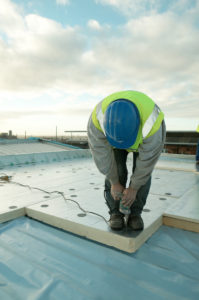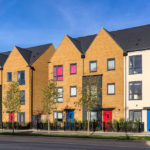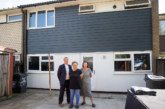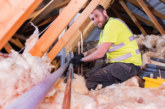Simon Storer, Chief Executive of the Insulation Manufacturers Association (IMA), considers how tighter building envelopes can help counteract climate change.
The UK Government’s Future Homes Standard mandates the end of fossil fuel heating systems in new-build housing from 2025, with an outlook to reduce the average household’s energy bills and help the UK achieve its net-zero 2050 carbon emissions target.
To make this a reality, good insulation is vital if homes and buildings are to become more energy-efficient and sustainable, which will in turn offset increasing energy costs. Installing PIR and PUR insulation will be essential in ensuring the UK’s housing stock keeps pace with the globe’s changing climate.
Meeting the net-zero carbon emissions target will be a tough feat, considering the UK’s 29 million homes account for 15% of the UK’s greenhouse gas emissions and many of these use oil and gas for heating and hot water.
The proposed Future Homes Standard 2025 is in line with the recent Committee on Climate Change (CCC) report: UK housing: fit for the future? and should influence the Part L revision later this year. This report confirms what many of us have been highlighting for many years: if we are to create high quality, low carbon and climate resilient homes then insulation has a key role to play. A thermally insulated building envelope installed correctly will achieve high performance, low maintenance, reduced energy bills and provide long-term energy efficiency.
 Misconceptions
Misconceptions
One of the issues is the lack of awareness on the part of as to what energy improvement work needs to be carried out. When installed correctly, insulation is considered to be more sustainable than installing energy saving technology or renewables. Other technologies can play their part and can be added in future, but for many residents additional technology can prove to be complicated to operate efficiently and miss the full potential energy efficiency gains.
Better U-values
Lower U-values in walls, floors and roofs, means less heat loss and enhanced thermal performance. One of the best ways to achieve this is through PIR and PUR insulation products. PIR products are available in a range of forms including boards, blocks and composite panels whilst PUR is used for in-situ applications such as fully filling cavities and as a spray applied solution.
For designers, the growing popularity of PIR insulation has meant it can achieve the highest insulation values from the minimum thickness of material. With lambda values as low as 0.021W/mK, PIR insulation performance can be achieved with less thickness than other commonly used insulation materials. Its exceptional insulating properties, high strength and light weight means it is used widely across residential, commercial and refurbishment projects.
An eye for detail
Attending to details will go some way to ensure homes are sustainable and perform to the standard intended. For instance, it is advised that junctions are appropriately designed and constructed in order to contribute to heat loss. Thermal bridges occur at breaks in insulation junctions and openings causing heat loss or gain, which ultimately leads to a change in internal temperature and an increased demand for heating or cooling. This can increase the risk of surface condensation and mould growth. Good design and workmanship necessitates a proper level of quality assurance throughout design and construction, and good detailing is particularly important for new-build and retrofit alike.
Moreover, to ensure thermal performance is uncompromised, all contractors need to make sure the levels of site supervision are of a good standard, and the manufacturer’s installation instructions are followed and installation instructions around potential cold thermal bridges and awkward details are achieved.
Future proofing is key
Focusing on the building fabric will enable specifiers to future-proof their designs, which can be employed on projects of any size from the largest public building to the smallest domestic extension. A more energy-efficient fabric from the outset can be upgraded later on with improved services, ventilation measures or the addition of renewable technologies.
Ensuring continuous insulation, minimising thermal bridging and achieving high levels of airtightness in buildings all play their part in a well-designed building fabric, which decarbonises our homes. Addressing these aspects of construction means the Building Regulation’s thermal targets can be met or exceeded and those performance levels can be incorporated into the finished building’s performance targets.
Thermally-efficient building envelopes are a long-term solution to a complex issue: climate change. Getting the fabric of the building properly insulated should always be the starting point to assure thermal efficiency and occupant comfort. Using solutions such as PIR insulation will remain the most direct route in helping achieve the net zero target as well as compliance with the energy performance requirements of the revised Building Regulations Part L. Having housing stock which is resilient to a changing climate will put us on the best route to building better for the future.









